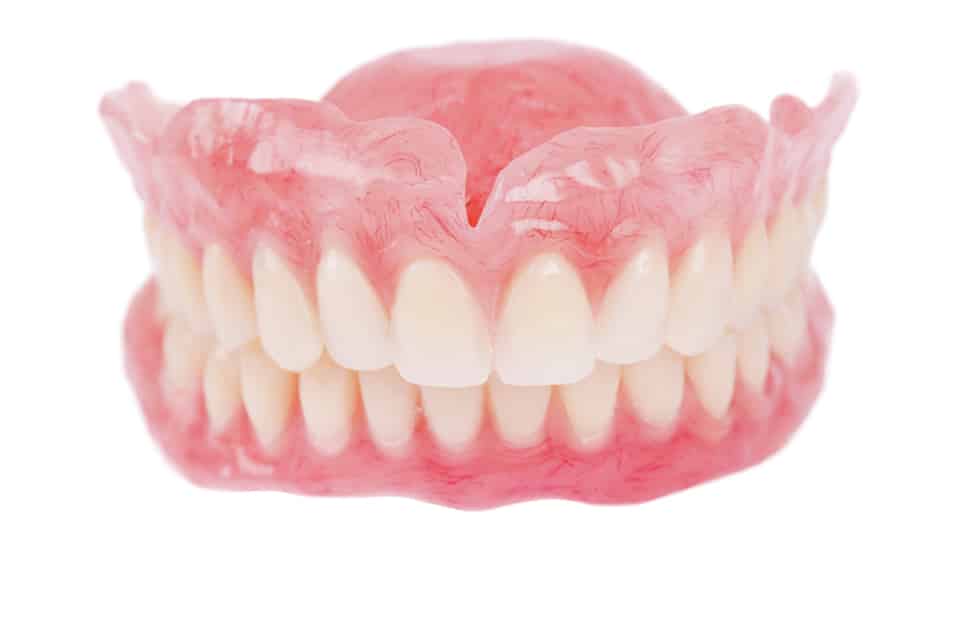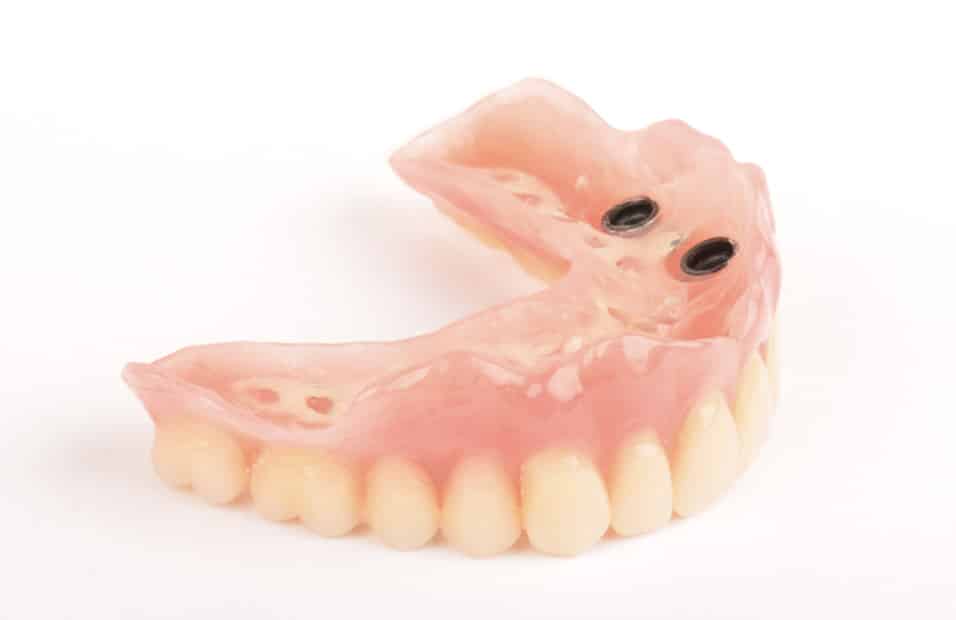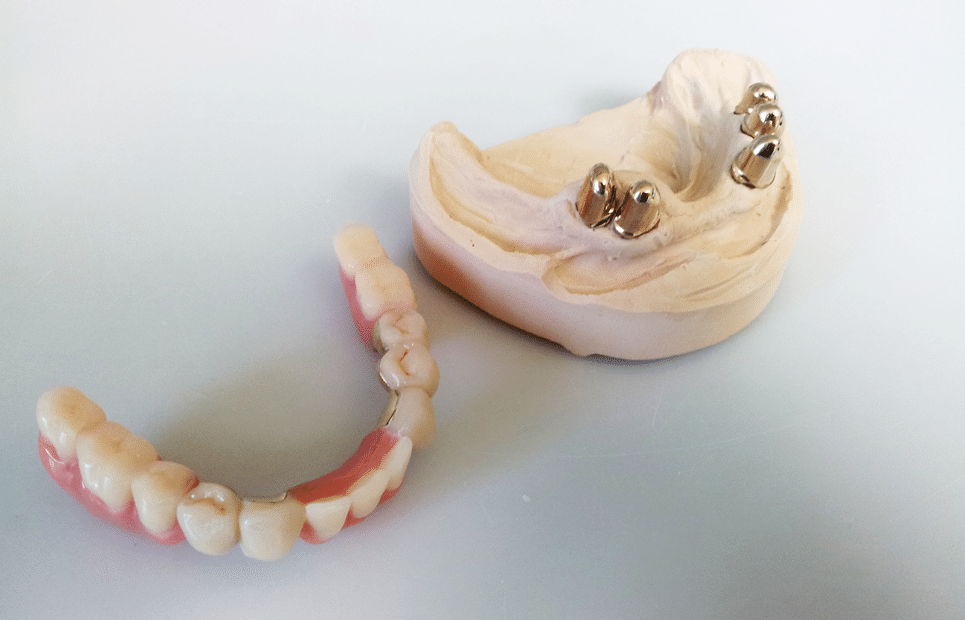Acrylic Dentures
The cheapest and simplest solution to full edentulousness is the manufacturing of dentures, which lie on the mucosa of the teethless jaws, sticking to these, but still permitting a slight movement of the artificial teeth during mastication and possibly during speech as well, since besides the anatomical undercuts of the bone, there is nothing to stabilize them. The dentures of the upper jaw almost always are much more stable than the lower ones, due to the shape of the bone. When the dentures do not stay on the mucosa with satisfactory stability, this can be helped with denture-adhesives, or with the insertion of implants into the bone.
Dentures connected to implants
With implants becoming part of everyday dentistry, new possibilities arise for the patient and dentist alike. In the case of full edentulousness (no teeth left in the mouth), one of the best solutions is inserting 3 implants (lower jaw) or 4 implants (in the upper jaw), and connecting a removable denture connected to these implants. Although these dentures are removable, they are very popular because of their low cost (few implants), cleanability due to it's removable nature and high aesthetic results (teeth and gingiva can be individualised by the dental technician).
Partial dentures (Combined dentures)
If there are still healthy teeth present in the mouth, but not enough to hold a fixed bridge, the teeth can be used to stabilize a combined denture. Combined dentures consist of two parts: one is fixed to the remaining teeth, while the other part can be removed – these are joined by a precision attachment, the fixed one stabilizing and holding the removable part in it’s place, allowing eating, talking and great aesthetics. An alternative to this would be implants, that might allow the making of a completely fixed restoration if there is enough bone present.



